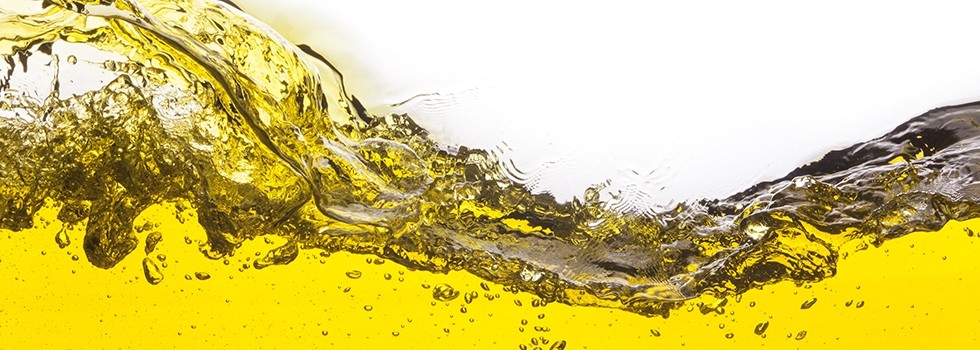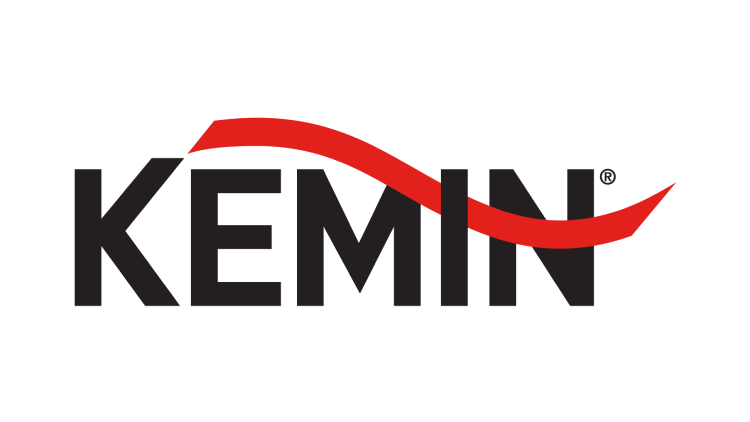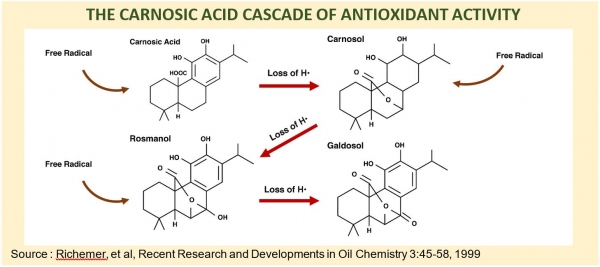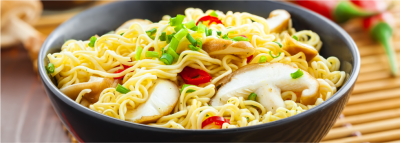Promotional Features
Unlock the benefits of natural antioxidants to preserving food quality and extend shelf-life
Insights into food matrix and antioxidant helps manufacturers meet the goal of food quality preservation. By Joanne Tan, Kemin Food Technologies Asia
In the past, shelf-life extension solutions were limited to methods such as curing, sugaring, fermentation, drying and freezing. Although these conventional food preservation methods guaranteed safety, the application affected food structure, changed nutritional characteristics and impacted the organoleptic experience of products.
To combat these problems, antioxidant and antimicrobial solutions were discovered to offer safe and quality products for consumers.
Role of antioxidant in quality preservation
In the food and beverage industry, antioxidants have always been an important addition to recipe formulation—this helps to delay oxidation and maintain the quality of the product for a longer shelf-life, especially for fats or oil-containing products such as fried food, crackers, nuts, instant noodles, dairy products and edible oil itself. The absence of antioxidants affects the stability of food ingredients; this shortens the shelf-life of a product and affects the business of food manufacturers as well as the export potential of food.
For decades, butylated hydroxyanisole (BHA), butylated hydroxytoluene (BHT) and tert-Butylhydroquinone (TBHQ)—which are synthetically derived—were commonly used as antioxidants in food as well as cosmetic and industrial applications. Although these ingredients have been evaluated extensively by the FDA and dubbed “safe to consume” at an allowable limit, TBHQ has since been banned for use in food in Japan and some parts of the EU, while BHA has also been flagged by the state of California and the U.S. National Institutes of Health as it is predicted to be a human carcinogen*. With an increasing number of clinical trials and investigative papers highlighting the negative health impact of synthetically-derived antioxidants, there has been a growing number of consumers who are progressively scrutinizing synthetically derived preservatives.
Globally, consumer demand for natural ingredients has spurred the clean-label trend which has driven food and beverage manufacturers to find clean label alternatives to replace synthetically derived antioxidants. According to a report by Markets & Markets Research, the clean-label ingredients market is projected to arrive at an estimated value of $47.1 billion with a CAGR of 6.50% globally in 2022 with Asia-Pacific projected to achieve a CAGR of 7.00% at $10.30 billion. This projection was propelled by consumer demand towards cleaner labels as well as food manufacturing giants’ active action to replace synthetic ingredients with natural ones. This is exemplified by General Mills and Kellogg’s to remove synthetic antioxidants from staple products like cereals, and source for holistic and natural shelf-life extension solutions such as tocopherol and rosemary extracts*.
Mindful development and reformulation to clean up labels with natural antioxidant
The commonly used natural antioxidants would include rosemary plant extracts and soybean-derived, mixed tocopherol. Although both are common antioxidants used within the market, their applications vary. The application process requires a true understanding of the antioxidant at their molecular levels—the use of antioxidants to extend the shelf-life of food and protect the quality of food products extends beyond just matching a product with its intended market of “synthetic” or “natural”.
Antioxidant activity and reactivity is considerably complex, and it depends heavily on a few factors. To select the right antioxidant for food products, there are various factors that need to be taken into consideration:
- Food matrix
- Intended shelf-life
- Manufacturing process
- Regulatory landscape
- Storage condition
- Types of fats or oil content in the product
These are the considerations that need to be taken into account in order to achieve the protection that a food product needs to warrant product stability and desirable shelf-life to meet the business and consumer need.
For example, when selecting a natural antioxidant to extend the stability of unsaturated oil and fried products, one should compare tocopherol and rosemary’s application. Rosemary would be a better option as it is able to exhibit an antioxidant effect when primary and secondary oxidation occurs—this is due to the cascading effect of antioxidant activity of carnosic acid. Although carnosic acid and carnosol might degrade during frying, some of its degradation products are still antioxidants that will continue to provide the protection for oil and fried foods.
Translating science into real life application – case studies
The first example shown was a study comparing the performance of two natural antioxidant rosemary extracts (FORTIUM R30) and mixed tocopherol (FORTIUM MT70) at 500 ppm over untreated canola oil for 12 months in ambient storage (Graph 1).
In the seventh month, both untreated canola oil and canola oil treated with tocopherol reached a peroxide value of 10 meq/kg, which indicates oxidation and deterioration of oil quality while the rosemary extract reached 10 meq/kg at the end of the 10th month. This indicates the effectiveness of the rosemary extract as a choice of antioxidant for oil with high unsaturated fat
In another different food matrix, we explored the use of tocopherol in extending the shelf-life of a nutritional bar. In the study, we compared the effectiveness of mixed tocopherol and delta rich tocopherol in extending the shelf-life of such food matrix through an accelerated shelf-life study for 3 months at an increased temperature of 45˚C. We measured the peroxide value and P-anisidine value, whereby primary oxidation and secondary oxidation were evaluated.
Although both mixed tocopherol and delta rich tocopherol have similar performance in terms of average peroxide value (Graph 2), it is apparent that the nutritional nuts bar treated with delta rich tocopherol had a lower p-anisidine value—this indicates that delta rich tocopherol is more effective in delaying oxidation than mixed tocopherol, even at a lower dosage (Graph 3).
The phenomena is partially created by the nature of the tocopherols, whereby mixed tocopherols are deemed to be more effective in controlling the primary stage of oxidation, but they do not survive abusive processing such as heat in comparison to delta rich tocopherol. This occurs due to the difference in the chemical structure of tocopherol homologues. The composition of mixed tocopherols contain alpha, beta, gamma and delta homologues with each homologue having a different biological and antioxidant activity. Delta homologue is known to have a more superior antioxidant activity while alpha tocopherol is known to be easily absorbed by the human body, hence promoting better Vitamin-E activity. The relative stability of these homologues have been studied and it was found that α-tocopherol is less stable than δ-tocopherol, while β-and γ-tocopherols degrade at an intermediate rate. This explains the importance of delta rich tocopherol as an effective antioxidant molecule.
The selection and adoption of antioxidants into various food formulations require evaluation from various aspects in order to protect the organoleptic qualities of the product and extend its shelf-life.
Kemin has been working with food and beverage manufacturers of various scales to resolve their specific shelf-life challenges. Instead of supplying a standard, commonly used antioxidant, Kemin collaborates with individual customers to understand their main challenges and objectives from various viewpoints to identify the right tailored solution.
By understanding antioxidants and food matrix at their molecular levels and leveraging the insight and expertise we have, Kemin is able to harness the synergistic benefits of antioxidants and deliver suitable solutions required for different food and beverage products. To help food manufacturers wield the true potential of antioxidants at a cost-effective price point, Kemin’s clean-label portfolio will be most effective.
*References available upon request.










